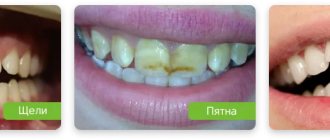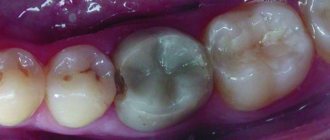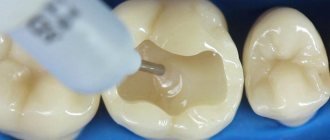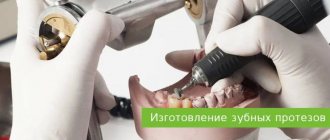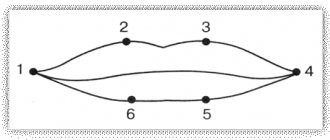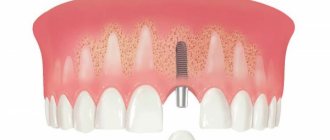New technologies are constantly emerging in dentistry, thanks to which higher-quality dental restorations become possible. These innovative techniques include dental modeling. It allows you to obtain perfectly matching prostheses for a specific patient. With the help of modeling, it became possible to accurately reproduce the anatomical forms and functional features of the dentition. The result is high aesthetics of the entire oral cavity.
There are two types of dental modeling:
- The direct method is diagnostic imitation using wax.
- The indirect method is modeling, so to speak, in full size.
Indirect modeling steps
Indirect modeling takes place in several stages:
- First of all, impressions are taken from the upper and lower jaws. This is done using silicone, and the most important thing is that it is of high quality. At the same stage, the jaws are fixed in the usual closed state with the preparation of the bite ridges and registration taking into account the face bow.
- Working with a specific device that allows you to obtain an accurate model of the movement of the lower jaw and adjust all movements of the masticatory apparatus at the time of its functioning. If the bite is low, the device, taking into account facial characteristics, calculates how much it needs to be raised.
- Installation of the resulting silicone model on a plaster base in an article (special device) for analysis. At this stage, the dental technician takes into account the wishes of the patient and the doctor regarding functionality and aesthetic data. Next, a wax model is made, shown to the patient and, if necessary, adjusted.
If all of the above stages pass without any difficulties, then a permanent prosthesis is made in the laboratory.
Purpose of application
The need for Wax-up is due to the following factors:
- Reproduction of dental units from wax is the starting stage of restoration work. It is required for planning future work of dentists. Wax impressions help to track the individual characteristics of the structure of teeth and avoid errors during implantation.
- Calculation of the cost of upcoming dental procedures.
- Temporary prosthetics. The specialist takes samples for the production of intermediate prosthetic restorations made of plastic. The technology is used when additional time is needed to create fixed prostheses.
Our team of doctors
Maxillofacial surgeon, Implantologist
Bocharov Maxim Viktorovich
Experience: 11 years
Dental surgeon, Implantologist
Chernov Dmitry Anatolievich
Experience: 29 years
Orthopedist, Neuromuscular dentist
Stepanov Andrey Vasilievich
Experience: 22 years
Endodontist, Therapist
Skalet Yana Alexandrovna
Experience: 22 years
Orthopedic dentist
Tsoi Sergey Konstantinovich
Experience: 19 years
Dentist-orthodontist
Enikeeva Anna Stanislavovna
Experience: 3 years
Advantages and disadvantages
Creating wax models is additional work for orthodontists, requiring more time and expense to achieve a Hollywood smile.
Despite this, experts recommend the procedure, citing the following criteria:
- during the creation of an artificial smile, all the nuances can be corrected at the modeling stage;
- making wax samples allows the client not to waste time getting used to permanent structures;
- elimination of many inconveniences - discomfort, pain, wear, addiction;
- after the wax reproduction stage, the preparation process is more gentle;
- the client is fully involved in the process of adjusting artificial teeth using the direct method;
- with the indirect technique, the client may not spend additional time in the dental chair; the production of artificial dentures can be carried out without his presence.
The disadvantages of this procedure include small losses of accuracy with the indirect reproduction method. This is due to the fact that when the wax cools, it slightly changes its previous volume.
Stages of direct modeling
Direct modeling is carried out by the doctor directly in the patient’s oral cavity. In this case, it is possible to accurately determine the appropriate shape of the prosthesis. This procedure can be figuratively compared to trying on a dress:
- The doctor makes impressions of the teeth using silicone, where special attention is paid to the palatal part, without which it is impossible to obtain a full-fledged impression. The silicone impressions are filled with a composite mass, usually a different color from the teeth, and then the copy is placed on the patient’s jaw.
- The resulting impression is taken and excess composites are removed, and adjustments are made if necessary.
- Next, the patient’s teeth are cleaned of plaque using special accessories; they are not sawed or ground down, thereby maintaining their integrity.
- The base shade of enamel is applied to the template itself, then the remaining layers are applied one by one. Thus, the tooth is restored taking into account all the details of its surface. The structure is restored gradually, and finally the corresponding shade of enamel is applied.
When the surface of the model is completely dry, it is processed mechanically. The dentures are treated with a specific glue and attached to the prepared model. The patient is allowed to spend a certain time with temporary prostheses, thereby observing his own sensations and deciding whether further correction is needed. In the meantime, the doctor will be able to study the reactions of the lower jaw joint. The technician is allowed to make several models at the same time, then the patient has a chance to choose the most optimal option.
If the client does not make any complaints, then the resulting models are sent to the laboratory for the production of permanent prostheses. Direct restoration is especially suitable for patients who need to improve their bite and those who have severe enamel wear. Including models, prosthetics on implants is not complete.
Material requirements
During the Wax-up procedure, two types of beeswax are used:
- Type I It is actively used when modeling the direct method directly in the patient’s oral cavity.
- II type . Effective for indirect technique. This version of wax is slightly lower in quality, but does not affect the final work in any way.
When choosing, storing and using modeling material, you should pay attention to some rules:
- to achieve a clearer contrast, it is worth using colored waxes, namely, red and blue shades are widely used;
- after hardening, the forming material must be rigid and not crumble;
- when heated, the mass cannot contain any impurities or crumbs; their presence can affect the quality of the work, creating a rough surface with reliefs;
- when scraping while giving the required shape, the wax should not chip or fall off in pieces;
- storage periods should be strictly observed;
- choose the right type of material when choosing a technique;
- You should give preference to soft varieties of beeswax or wax.
Advantages of modeling
Artistic modeling of teeth can do a lot - from deepening or protruding a tooth to correcting the shape of the entire dentition. This type of prosthetics has many advantages:
- Demonstration to the patient of a visual, final result.
- Elimination of any defects at the very beginning.
- Absent future discomfort.
- Quickly addictive.
- The adjacent teeth are not damaged.
- All wishes of the patient are taken into account.
- It is possible to adjust the model.
Completely finished models can only improve the final result of the restoration if they are of good quality. Therefore, it makes sense to contact the highly qualified Implantmaster clinic in Moscow, where professionals work exclusively with modern equipment, which guarantees high quality of the final result.
Author:
Features of partial restoration
Front teeth. Involves partial correction of the shape and shade of incisors and canines. This artistic restoration of the front teeth is used for minor damage as a result of trauma or carious lesions. Most often, in this case, it is important to eliminate various aesthetic defects that become noticeable when smiling, so it is especially important to choose the right composite material in shade.
Chewing teeth. Correcting their shape requires no less attention than when working with incisors and canines. When restoring these teeth, it is important to accurately reproduce the shape of the cutting edge and surface microrelief. This is important for maintaining chewing function and proper bite.
To learn more about the modeling and restorative techniques used, consult your dentist. To make an appointment at a clinic in the Medline-Service network, call the phone number indicated at the top of the page.
Reviews
How many negative sensations and experiences do deformed, missing or chipped teeth bring to a person?
To correct these defects, when turning to a dentist, he cannot always clearly explain his vision of the result in words. Wax modeling allows you to resolve this situation.
You can share your experience and impressions of Wax-up modeling by leaving a review in the comments to this article.
If you find an error, please select a piece of text and press Ctrl+Enter.
Tags wax modeling fixed dentures
Did you like the article? stay tuned
Previous article
Features of removing a dental cyst using cystotomy
Next article
What problems can be eliminated by relining a removable denture?
Contraindications
Modeling using wax is a painless and completely safe procedure for humans. The technique does not cause any unpleasant sensations or discomfort and does not involve the use of painkillers.
Since only natural raw materials – beeswax – are used to build models, the technology has only one contraindication for use. Patients who experience an allergic reaction to honey itself or beekeeping products should not undergo this procedure.
Important! If there is a reaction to honey, the patient is obliged to warn the specialist about this. He will select a different, safer method of prosthetics and restoration for him.
Preparatory process
Before doing wax modeling of teeth, you need to complete a number of appointments, one of the first is conducting diagnostics of the oral cavity. If necessary, an x-ray and computed tomography of the jaw should be performed. It is also noted that in case of oral diseases, it is necessary to undergo a course of treatment. Don’t forget to sanitize and follow hygiene rules.
Only after a full examination and treatment course has been carried out, the doctor begins to create impressions.
Indications
Wax-up technology is recommended and used for any indirect aesthetic restoration, namely for crowns, lumineers, bridges, veneers.
Thanks to the creation of wax models, the final result from the production of these products is calculated as accurately as possible.
The technique is also applicable for correction of parameters (shape and size) of the crown part, as well as for complete reconstruction of the dental form. In the second option, the technology is used:
- in the production of temporary orthopedic products on samples with prepared units;
- for planning the placement of removable and non-removable systems;
- when determining the amount of teeth grinding;
- to evaluate the result of occlusion correction on a diagnostic model;
- when planning the exact placement of implants with immediate subsequent loading.
Wax modeling can also be used for orthopedic correction of defects in the location of teeth, for example, when correcting the progenic conformity of the jaws.
